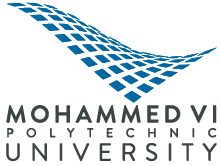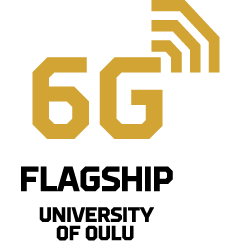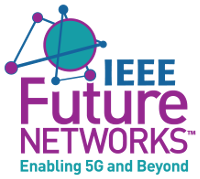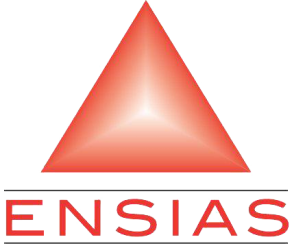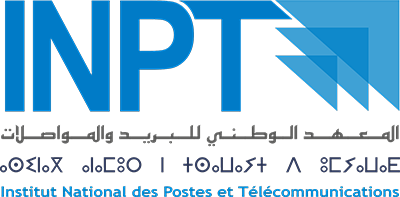MONDAY, 15 APRIL, 09:00-12:15
TUTO#1 - Enabling Technologies for Crowd Sensing and Management
TUTO#2 - Softwarization Concepts and Practice in 5G Communication Systems: SDN, NFV, ICN
TUTO#3 - Artificial Intelligent Agent Design for Wireless Systems Optimization
TUTO#4 - Wireless Transmission of Big and Small Data: A Unifying Data-Oriented Approach
MONDAY, 15 APRIL, 14:00-17:15
TUTO#O5 - Wireless Networks Design in the Era of Deep Learning: Model-Based, AI-Based, or Both?
TUTO#O6 - Evolution of Converged Optical-Wireless Networks Towards 5G Fronthaul Network Architectures
TUTO#O7 - Ambient Backscatter Communication: State-of-the-Art and Beyond
TUTO#O8 - Integrated Aerial/Terrestrial 6G Networks for Ubiquitous 3D Super-Connectivity for 2030s
TUTO#9 - 5G-and-beyond V2X technologies and enablers
TUTO#10 - Towards Autonomic Management of 5G Network Infrastructures
TUTO#1: Enabling Technologies for Crowd Sensing and Management
Room: BYBLOS
Presenters: Prof. Hossam S. Hassanein (School of Computing, Queen’s University, Kingston, ON Canada); Dr. Nizar Zorba (Electrical Engineering Department, Qatar University, Doha, Qatar)
In this tutorial we will start with a literature review on the chronological order for IoT, crowd sensing and crowd management, with the objective to set a common underlying reference models. We will tackle and present recent efforts in data collection techniques, where the quality of the reported data highly faces tangible interoperability issues because it has been collected over heterogeneous sources. Such issues include inaccuracies, data-labelling inconsistencies, time-sensitivities and different reporting granularities and finally; how to infer information about the actual situations. Along the whole tutorial, we will highlight the different technologies that enable crowd sensing and management, and their availability in the market. In the last part of the tutorial we will comment on privacy issues, and how privacy is jeopardized in emergency situations where the accuracy level highly depends on the collected data. An interesting tradeoff privacy-accuracy will be described.
TUTO#2: Softwarization Concepts and Practice in 5G Communication Systems: SDN, NFV, ICN
Room: LUXOR
Presenters: Dr. Fabrizio Granelli; Prof. Frank H.P. Fitzek
A big step lies ahead when moving from today’s 4G cellular networks to tomorrows 5G network. Today, the network is used for content delivery, e.g. voice, video, data. Tomorrow, the 5G network will be fully softwarized and programmable, with new degrees of freedom. The aim of the tutorial is to illustrate how the emerging paradigms of Software Defined Networking, Network Function Virtualization, and Information Centric Networking will impact on the development of 5G systems and networks, focusing on the hands-on/practical perspective. Attendees will be exposed to the most recent technologies in the field of networking and will learn how to use them in a real setup in the “hands-on” session. The tutorial is split into two sections: (i) the first one, where the attendees will learn the basics of SDN, NFV, and ICN through presentations and some hands-on experiences; (ii) the second one, where the attendees will deploy simple yet complete solutions related to SDN/NFV/ICN application in the framework of 5G (network slicing, mobile edge computing) using their own laptops.
As the tutorial is concentrated into half day, the structure will be the following:
-
Introduction
- Brief overview of 5G
- Basics of SDN: detachment of control and data planes
- Basics of NFV: detachment of software from hardware
- Basics of ICN
-
Hands-On session on Merging SDN, NFV, and ICN
- Network Slicing with Mininet
- Mobile Edge Cloud with Docker
- Conclusion, open discussion and wrap-up
Through the above theory and practice sessions, the attendees will gain useful insights on such emerging aspects in SDN/NFV. Note: Most hands-on sessions will be performed by using virtual machines.
For this reason, it is highly recommended to all attendees to install VirtualBox (https://www.virtualbox.org/ – preferred) or similar VM software before the event.
Additional useful software to download / install before the event:
- Mininet VM (https://github.com/mininet/mininet/wiki/Mininet-VM-Images)+ install Flowvisor (https://github.com/OPENNETWORKINGLAB/flowvisor/wiki)+ Download hands-on Scripts (https://www.dropbox.com/sh/k5kty3t79g4fozn/AADtJXVUDGtNVz1eMrOO6gERa?dl=0)
- Link to software to use for docker hands-on session:(https://bitbucket.org/comnets/nfv-sdn-docker-tutorial/src/master/)
- Docker software (varies depending on the operating system)(https://bitbucket.org/comnets/nfv-sdn-docker-tutorial/)
TUTO#3: Artificial Intelligent Agent Design for Wireless Systems Optimization
Room: VOLUBILIS
Presenters: Dr. Haris Gacanin
In the recent years, we are witnessing an explosion of research efforts to utilize artificial intelligence (AI) with machine learning (ML) in the design of wireless systems. A data analytics (DA) have given insight to indirectly understanding user experience and wireless system operations. Such approaches unveil hidden patterns and data correlations not visible to network and business operation systems. However, in the years to follow, we may expect that artificial intelligence (AI) driven operation match our own and autonomous systems, while wireless infrastructure may become regulated utility like electricity or water (beyond 2035 by some forecasts). 5G systems aim to accommodate heterogeneous technologies and applications, while beyond 5G (B5G) systems may be able to autonomously aggregate technologies to satisfy a dynamic user needs (Physiological, Safety, Belongingness, Esteem, Self-actualization). Today, wireless systems are mainly reactive enabling actions only when a problem has already occurred. The resolution to the problems is typically described by parametric optimization solutions which are sub-optimal and usually do not resolves the underlying root-cause of the problem. This approach is not satisfactory since it continuously degrades the user satisfaction resulting in high user churn. B5G wireless systems may embed planning strategy into the infrastructure itself, meaning that the system will become aware of the way it is being used to anticipate actual user needs at the specific moment and what it is likely to be required at later time. To this end, the fundamental breakthroughs are needed to design B5G as an autonomous system, able to build and exploit knowledge by learning and dynamically adjust its goals to satisfy human needs. AI with machine learning (ML) techniques will be necessary to design intelligence and abstract models from relevant data. The active sensor design needs to be addressed and understood not anymore as physical sensors but as logical arbitrary devices that adapt to environment. Such network learns, tracks and exploits the behavior of both the individual user and device by means of information sensing. The network then can tailor its future goals and objectives based on the user’s learnt preferences and feedback. The goal of this tutorial is to introduce an intelligent agent design theory that will help the participants to identify potential applications in their own research field. We give an overview of the very rapidly growing research literature, explain state-of-the-art agent types and design methods, and illustrate some promising applications, such as search for optimal node placement. The tutorial further explores challenges related to design of intelligent agent for challenging wireless communication environment. The growing importance of proper understanding of complex behavior is stressed to unveil necessary future research directions.
TUTO#4: Wireless Transmission of Big and Small Data: A Unifying Data-Oriented Approach
Room: TINGIS
Presenters: Dr. Hong-Chuan Yang; Prof. Mohamed-Slim Alouini
Wireless communication systems play an essential role in the data transmission for big data and Internet of Things (IoT) applications. These applications generate data of variable sizes and dramatically different quality of service requirements. Therefore, the design and optimization of wireless transmission strategies for diverse application scenarios are of critical current interest. In this proposed tutorial, we present a unique data-oriented approach for the design and analysis of wireless transmission strategies, to facilitate an integrated common physical transmission infrastructure for different data types. Novel data-oriented performance metrics are proposed and applied to the analysis of wireless transmission strategies in both information theoretical and practical transmission settings. We also develop analytical frameworks to accurately characterize the data transmission time in cognitive and non-cognitive environments. Compared to conventional channel-oriented approach, the data-oriented approach offers important new insights and leads to novel research findings. Through this tutorial, the attendees will obtain a brand new perspective to the design of advanced wireless transmission technologies.
TUTO#5: Wireless Networks Design in the Era of Deep Learning: Model-Based, AI-Based, or Both?
Room: ANDALOUS
Presenters: Dr. Marco Di Renzo; Dr. Alessio Zappone; Prof. Mérouane Debbah
The tutorial will provide the audience with a solid understanding of the fundamentals of deep learning and its use for the design of wireless communications. Artificial neural networks, which are the distinctive feature of deep learning as compared to other machine learning methods, will be introduced. The main artificial neural networks architectures will be described, focusing in particular on feedforward networks and of the problem of their supervised training. The most widely used methods for neural network training will be described and tips and tricks to improve the training process will be explained. After introducing the fundamentals of deep learning, the tutorial will address how deep learning can be merged with more traditional model-based approaches to perform wireless networks design, exploiting the frameworks of transfer learning and reinforcement learning. Several relevant applications will be described, quantifying the advantages of embedding expert knowledge coming from theoretical models, into data-driven methods, considering diverse system scenarios, such as dense heterogeneous cellular networks, energy-efficient networks, network-slicing systems, and chemical-based communication systems. A main conclusion drawn by the tutorial is the embedding expert knowledge into traditional neural network design can significantly reduce the amount of data that is necessary to use for training purposes, thus significantly simplifying the overall system design.
TUTO#6: Evolution of Converged Optical-Wireless Networks Towards 5G Fronthaul Network Architectures
Room: SHELLAH
Presenters: Dr. John S Vardakas; Dr. Christos Verikoukis
Network operators are currently putting extreme pressure on the existing network infrastructure so as to respond to the vast traffic demand increase and to support a number of diverse network services, while preserving appropriate communication quality. In this environment, the fifth generation (5G) of mobile networks is expected to be deployed, targeting to encounter the challenge of 1000 times increase of the wireless traffic in 2020, compared to the traffic levels in 2010. In order to confront these ambitious requirements, the mainstream solution is to rely on both wireless and fiber-based fronthauling; however, these deployments either consider the two network infrastructures as two independent fronthaul approaches, or they exclusively utilize fiber to provide connectivity to every Remote Radio Head (RRH). Converged optical-wireless architectures can be considered as viable solutions that are able to realize an efficient 5G network for high-density and high-coverage deployments. In this tutorial, we aim to present an overview of current optical-wireless network configurations, as well as the latest research results on the application of converged optical-wireless network solutions as efficient 5G fronthaul network architectures. An introduction to current and future optical access networks, as well as future research challenges regarding 5G fronthauling are also presented.
TUTO#7: Ambient Backscatter Communication: State-of-the-Art and Beyond
Room: BYBLOS
Presenters: Prof. Riku Jäntti; Dr. Ruifeng Duan
The Internet of Things (IoT) is now arguably one of the most heavily discussed and researched topics in the technology industry, and has the potential of completely revolutionizing how we work and how we live. Future success and sustainability of IoT depends greatly on the ability of devices to communicate using very little power without incurring additional costs or worsening our energy footprint. This issue has driven significant attention towards (ambient) backscatter communication systems, as a possible solution to leverage green IoT applications and to increase capacity for future wireless networks. This tutorial contains two parts in order to provide participants with broad and comprehensive overviews of ambient backscatter communication technology which has been considered as one of the emerging and breakthrough wireless technologies. The first half of the tutorial covers the motivation, basic principles, the state-of-the art of (ambient) backscatter communications, and modulations schemes. The second half covers the receiver design issues, fundamental performance limits, and future works.
TUTO#8: Integrated Aerial/Terrestrial 6G Networks for Ubiquitous 3D Super-Connectivity for 2030s
Room: LUXOR
Presenters: Prof. Halim Yanikomeroglu
One reasonable starting point in the unfolding 6G discussion is to reflect on the possible shortcomings of the 5G networks to-be-deployed. 5G promises to provide connectivity for a broad range of use-cases in a variety of vertical industries; after all, this rich set of scenarios is indeed what distinguishes 5G from the previous four generations. Many of the envisioned 5G use-cases require challenging target values for one or more of the key QoS elements, such as high rate, high reliability, low latency, and high energy efficiency; we refer to the presence of such demanding links as the super-connectivity. However, the very fundamental principles of digital and wireless communications reveal that the provision of ubiquitous super-connectivity in the global scale – i.e., beyond indoors, dense downtown or campus-type areas – is infeasible with the legacy terrestrial network architecture as this would require prohibitively expensive gross over-provisioning. The problem will only exacerbate with even more demanding 6G use-cases such as autonomous aerial vehicles requiring connectivity, thus the 3D super-connectivity.
In this tutorial, we will explore a 5-layer vertical architecture (VHetNet) composed of fully integrated terrestrial and non-terrestrial layers for networks of 2030s:
- Terrestrial HetNets with macro-, micro-, and pico-BSs
- Flying-BSs (aerial-/UAV-/drone-BSs); altitude: up to several 100 m
- High Altitude Platforms (HAPs) (floating-BSs); altitude: 20 km
- Very Low Earth Orbit (VLEO) satellites; altitude: 200-1,000 km
- Geostationary Orbit (GEO) satellites; altitude: 35,786 km
In the absence of a clear technology roadmap for the 2030s, the tutorial has, to a certain extent, an exploratory view point to stimulate further thinking and creativity on opportunities and challenges.
TUTO#9: 5G-and-beyond V2X technologies and enablers
Room: VOLUBILIS
Presenters: Claudia Campolo (University Mediterranea of Reggio Calabria, Italy); Antonella Molinaro (University Mediterranea of Reggio Calabria, Italy, and CentraleSupélec, Université Paris-Saclay, France); Antoine O. Berthet (CentraleSupélec/CNRS, Université Paris-Saclay, Gif-sur-Yvette, France)
In the last decade, there has been a surge of interest in connected and autonomous vehicles and related enabling technologies (in the field of communication, automation, sensing, and positioning), which are expected to revolutionize future road mobility and quality of life. This complex landscape mandates a robust, flexible and business-agile communication, networking and computing technology foundation. In such a context, fifth generation (5G) technologies and enablers will take the lion’s share. By leveraging novel efficient air interfaces, sophisticated transceivers design, higher frequencies, as well as cutting-edge network softwarization, virtualization and programmability principles, 5G intends to guarantee ultra-low latency, ultra-high reliability, high-data rate vehicle-to-everything (V2X) connectivity. In this tutorial, we will first review the status quo of V2X-related research, development and standardization activities. Then, we will debate the lessons learnt after decades of work with DSRC/WAVE and ETSI ITS technologies and we will present the ongoing evolutions of IEEE 802.11 specifications. Following this, the key challenges and intriguing opportunities will be discussed as opened by cellular-based V2X technologies and by the new trends in the 5G and beyond (e.g., full-duplex, mmWave, NOMA, network slicing, NFV, SDN, MEC) research arena. Preliminary results achieved by the instructors will be presented and their perspectives towards the full realization of cooperative automated driving will be shared.
TUTO#10: Towards Autonomic Management of 5G Network Infrastructures
Room: TINGIS
Presenters: Dr. Faqir Zarrar Yousaf
Communication networks’ architecture and technologies are undergoing through their next evolutionary phase towards 5G. The year 2020 is expected to mark the official roll out and deployment of the 1st phase of a 5G network and services. There is a great momentum within the vendors, research and operator’s communities to determine relevant use cases and services, define requirements, prescribe architectures, and specify technologies that shall enable the 5G networks and beyond. We are now at a stage where relevant technologies have been identified, which are being specified in different standards organizations and developed under different open source projects. NFV is now being recognized as one of the key enabling technologies for the management of virtualized assets of 5G network infrastructure. Under ETSI ISG NFV, the NFV Management and Orchestration (MANO) framework and its various architectural and functional aspects are in the third phase of their specifications. However, there is a greater realization and requirement to make the MANO system to be autonomous, and in this context a ETSI ISG ENI (Experiential Network Intelligence) and ETSI ISG ZSM (Zero touch network and Service Management) are expected to compliment and enrich NFV MANO system towards realizing an autonomic and intelligent management system. Parallel to these standardization activities, there are vibrant open-source MANO projects, such as ONAP and OSM, which are racing to develop a production grade fully autonomous MANO system for the 5G networks and beyond. The main objective is thus to tutor the audience on the standard NFV-MANO system and highlight the orchestration challenges and discuss why and how Machine Learning can be leveraged to enable automated and optimized MANO operations.




